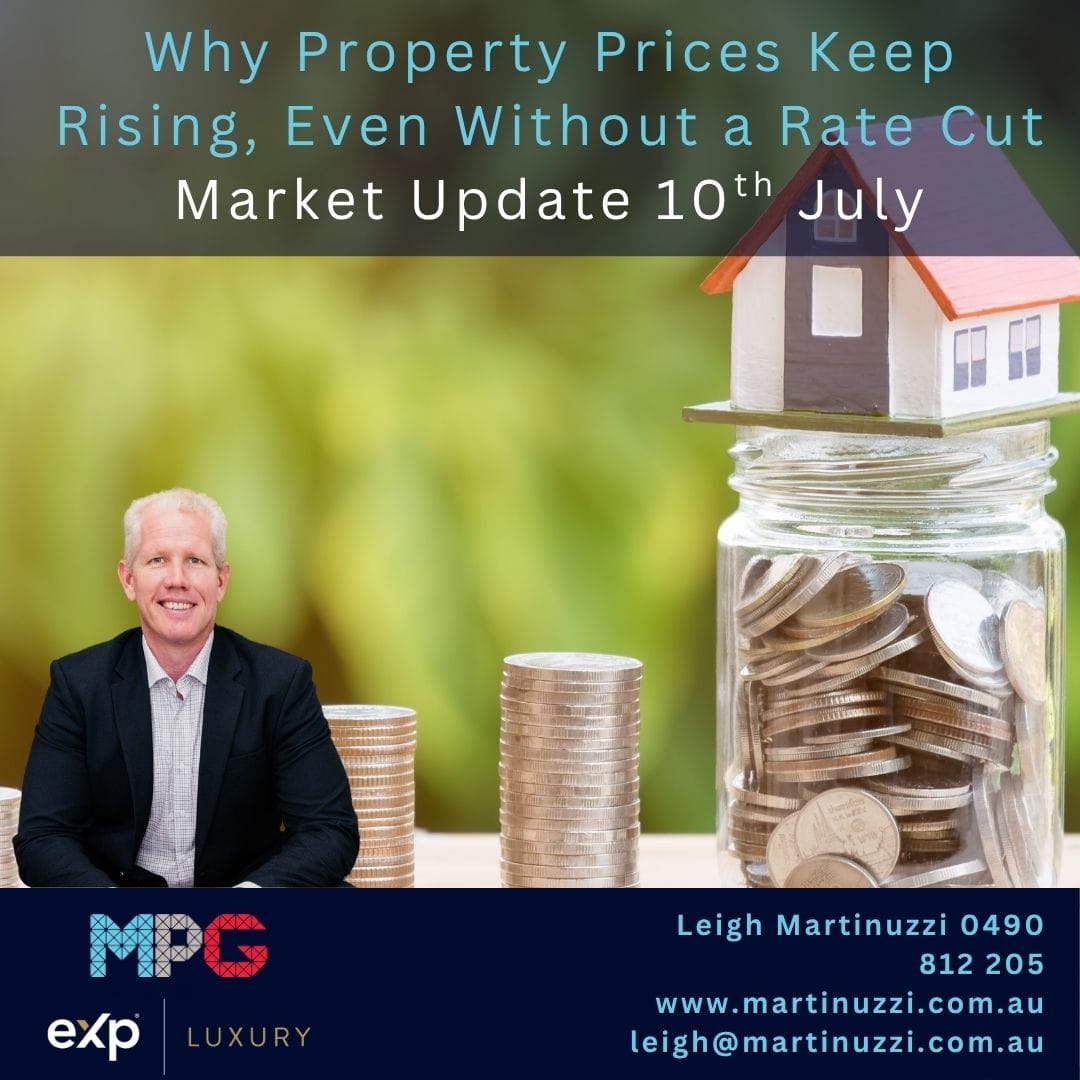Sunshine Coast Property Pulse: First Quarter Insights 2024
Weekly Real Estate Market Update with Leigh Martinuzzi MPG
The property markets across Australia are showing resilience and strength. After a slowdown last year, we’re witnessing a rebound in property prices across various regions. Markets like Brisbane, Adelaide, and Perth have performed exceptionally well, with year-on-year price growth exceeding 10% in each of these areas. Despite some delays, we’re now seeing increased transaction volumes and higher prices in most markets. On the Sunshine Coast, buyers are facing frustrations due to limited available stock. A-grade properties are particularly sought after, often selling swiftly and at or above market prices.
Three months into the year, we’re witnessing building momentum driven by a more confident market, thanks in part to the RBA’s decision to maintain the cash rate at 4.35% and a shortage of available stock. This resilience in the face of higher interest rates is driven by robust demand and historically low property supply levels, impacting both rental and buying markets.
Population growth, mainly driven by higher immigration numbers, is further fueling demand in a market where total property listings remain 40% below previous decade averages. With inflation coming under control, the RBA is confident in maintaining the cash rate, providing buyers with greater financial certainty and bolstering market confidence. This confidence is evident in record auction clearance rates (above 70%) and increased buyer activity across Sydney, Melbourne, and Brisbane.
Looking at CoreLogic’s home value index, prices have risen by 8.9% over the past 12 months, with the median dwelling price in Australia now at approximately $752,000. Brisbane prices have surged nearly 15% year-on-year, with the median dwelling price reaching $797,000. Locally on the Sunshine Coast and its hinterland suburbs, we’ve observed prices stagnating, not dropping, since March 2022, followed by a recent resurgence. Despite 13 rate rises during this period, prices have continued to rise, with median house prices in hinterland suburbs increasing by 6 to 7% on average over the past 12 months. Since March 2020, prices across Australia have grown by 32.5%, with hinterland suburbs on the Sunshine Coast experiencing even greater increases of up to 50 to 60%.
While the 18-year market cycle suggests continued growth for a few more years, there are mixed signals in the market. While some properties are fetching positive prices and seeing strong demand, others are taking longer to sell or not achieving expected prices. The construction sector appears to be experiencing both growth and challenges simultaneously, reflecting underlying fragility beneath the surface. Despite a low unemployment rate of 3.7% and a strong Australian economy, consumer spending on major items may be down, although overall retail spending remains positive. Services costs are rising, yet Australians seem inclined to spend on experiences and entertainment.
The Australian property market is worth a staggering $11 trillion, with approximately $2.1 trillion of that held as debt. As reported by Michel Yardney, it’s surprising to note that 50% of homeowners don’t have mortgages. Looking ahead, I believe the property market will continue to be characterised by increasing demand and limited supply, which will undoubtedly keep prices buoyant and rising. This dynamic presents both opportunities and challenges for buyers and sellers alike, shaping the landscape of the Australian property market for the foreseeable future.





